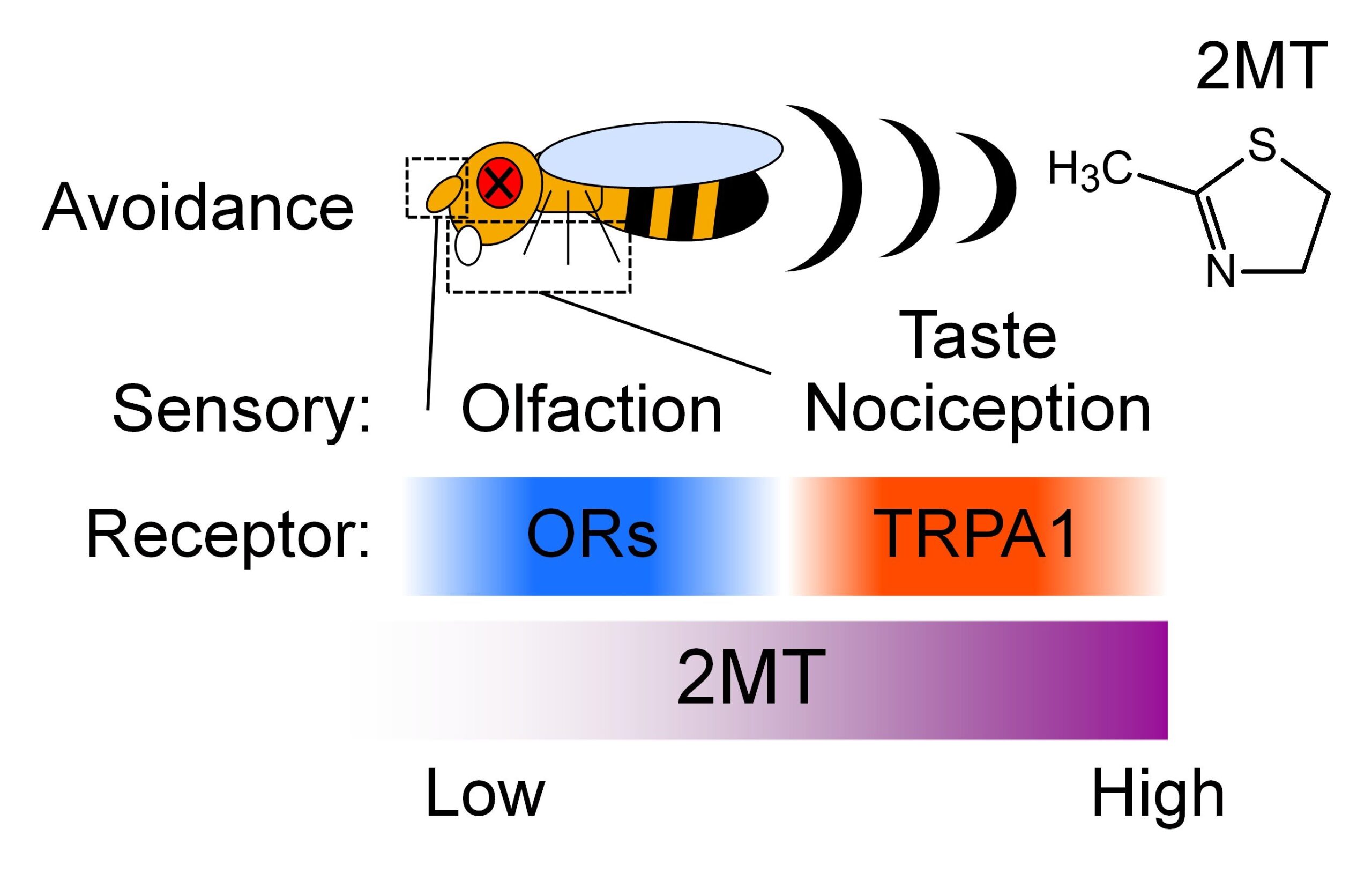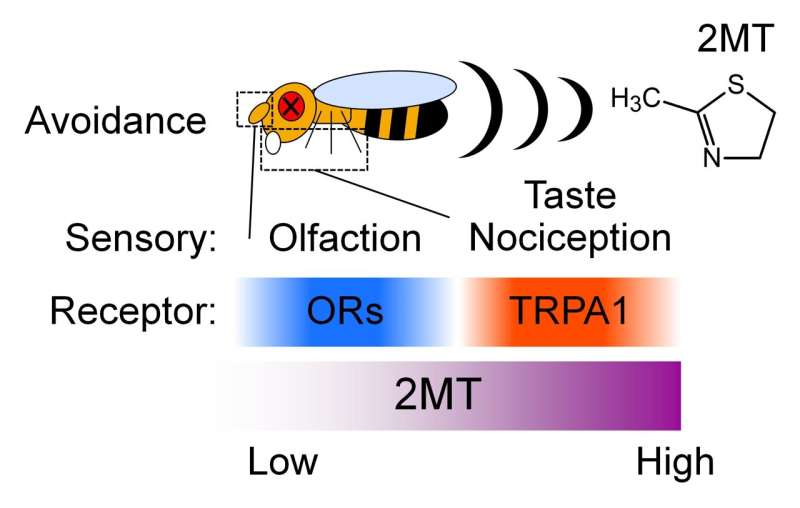

Crop damage in agriculture and the transmission of vector-borne diseases by insect pests have become worldwide threats nowadays. Chemical treatments such as insecticides and repellents have been a significant strategy against insect pests for centuries.
However, due to a limited understanding of the mechanisms of insect avoidance behavior, the development of insect repellents has been delayed.
To discover compounds that effectively repel insect pests, it is important to focus on key molecules associated with sensory, particularly aversive, responses. In this study, researchers identified a compound that induces robust aversive responses through multiple sensory pathways in the fruit fly, Drosophila melanogaster.
Among sensory receptors, Transient Receptor Potential (TRP) cation channels play a key role in nocifensive behaviors to various stimuli in many insect species. Particularly, the TRPA1 channel has been extensively studied as it is activated by various hazardous chemicals.
Therefore, insect TRPA1 stimulants are promising leads for novel repellents with a broad spectrum. Takaaki Sokabe and his colleagues at the National Institute for Physiological Sciences/the Exploratory Research Center on Life and Living Systems (ExCELLS) found that 2-methylthiazoline (2MT), an analog of a volatile compound found in fox urine, repelled flies effectively and revealed the molecular and cellular mechanisms of 2MT-induced aversions in the fly.
They recently published their findings in Frontiers in Molecular Neuroscience.
“2MT is reported to evoke innate fear responses in mice via TRPA1, therefore we expected that the chemical possibly has an aversive effect on insects,” Sokabe says. “And it worked terrifically more than our expectation.”
Fly’s avoidance behaviors revealed that 2MT stimulates multiple sensory modalities: 2MT vapor acts on odorant receptors (ORs) in an olfactory pathway, and direct contact with 2MT activates TRPA1 in taste and nociceptive pathways. This resulted in apparent avoidance of the chemical source by male flies and avoidance of egg laying by female flies. Furthermore, the researchers demonstrated that TRPA1 is activated by 2MT through the direct interaction of 2MT to specific two amino acids in TRPA1.
“The action of 2MT on multiple sensory pathways seems to be a key for its high effectiveness,” says Takaaki Sokabe. “Because the amino acids essential for TRPA1 activation are highly conserved across a wide range of insect species, including agricultural pests and disease vectors, it will be important to test 2MT on many other insect pests to evaluate the spectrum.”
This new work could promote the development of novel insect repellents by focusing on TRP channels and other types of receptors as promising targets.
More information:
Shoma Sato et al, Avoidance of thiazoline compound depends on multiple sensory pathways mediated by TrpA1 and ORs in Drosophila, Frontiers in Molecular Neuroscience (2023). DOI: 10.3389/fnmol.2023.1249715
Provided by
National Institutes of Natural Sciences
Citation:
Stinky, bitter, and painful: A novel insect repellent attacks multiple sensory pathways (2023, December 22)
retrieved 22 December 2023
from https://phys.org/news/2023-12-stinky-bitter-painful-insect-repellent.html
This document is subject to copyright. Apart from any fair dealing for the purpose of private study or research, no
part may be reproduced without the written permission. The content is provided for information purposes only.





